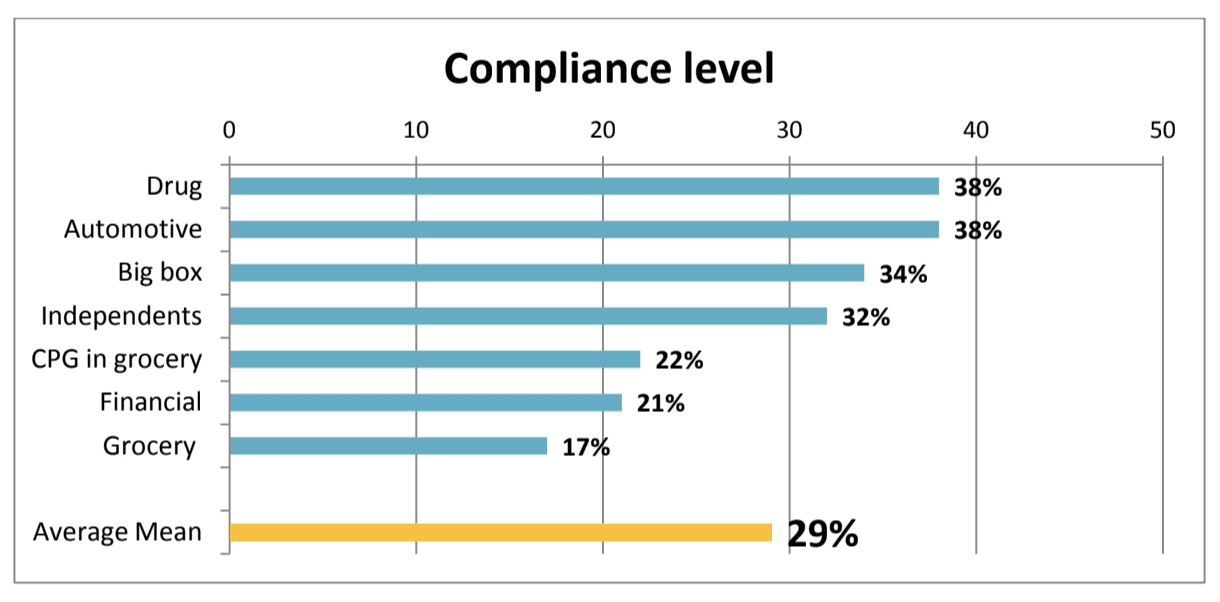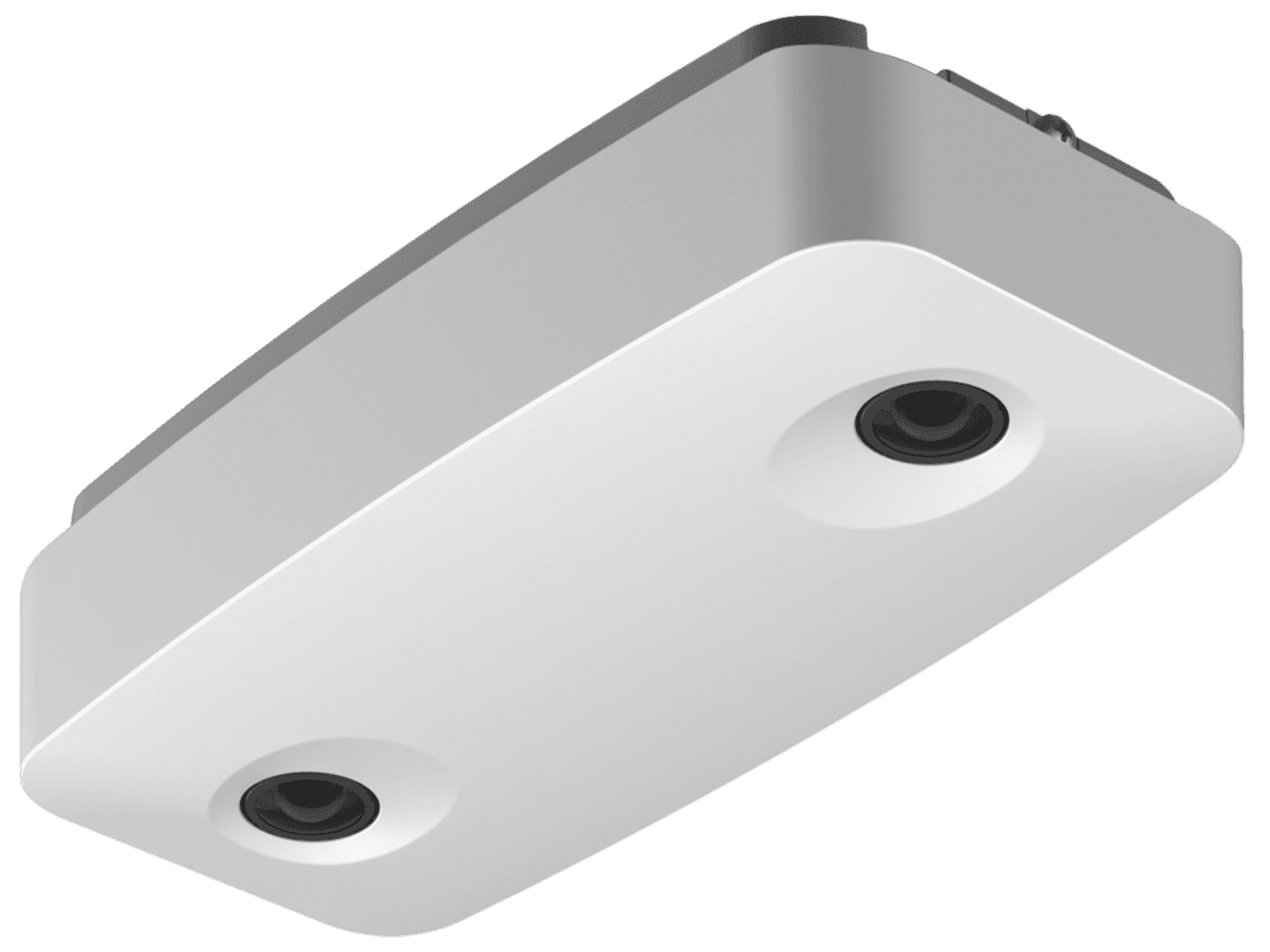Why Store Execution Is Important (And How To Improve It)

On this page
In retail, agility is a massive competitive advantage. In fact, the retailers that can’t adapt to changes required of them (whether they’re new safety procedures or evolving customer needs) will very likely be gone tomorrow.
But today, only 29% of direction sent to stores is being executed correctly by store teams. This means that marketers, merchandisers, and comms teams are wasting thousands of hours each year planning for campaigns and programs that will never be effective. It also means that retail brands can’t be agile and turn on a dime.
What Is Store Execution?
In the simplest sense, store execution is the implementation of direction -- which could be anything from standard operating procedures to promotional directives -- sent to stores down from headquarters. To provide a best-in-class customer experience, retail organizations want their store execution to be accurate, precise, and timely.
Today’s store teams are being asked to provide a top-notch customer experience while also running products out to the curbside pick up, dropping deliveries in mall lockers, and handing off purchases to Uber drivers for same-day delivery. This type of seamless customer and brand experience can only happen when store associates are given relevant, correct, and executable direction and information to exceed customer expectations.
How Do You Measure Store Execution?
In general, you can measure store execution by the percentage of tasks your field teams complete on time. The goal for this metric will vary from organization to organization, but most retailers begin by aiming for around 70-80% and from there, work towards continual improvement month-over-month as strategic changes are made to help the fleet become more aligned.
Additionally, some retailers track the percentage of tasks completed in general (which includes tasks completed on time and tasks completed late). This can be a helpful metric when looking at how to improve your store execution strategy. Sometimes HQ can underestimate the time a task takes to complete, or haven’t yet established a good synchronous relationship with their labor planning teams. Keeping the “% of tasks completed in general” metric in mind can help chart a path towards a more effective and efficient store execution strategy.
What Is The Retail Industry Average For Store Execution?
Dr. Hugh Phillips, a professor and consumer shopping expert based in Toronto, is an internationally recognized expert on the cognitive psychology of shopping: what consumers perceive in store and how they process information in their decision making. Dr. Phillips conducted original research in partnership with Pareto that showed that over 90% of the effectiveness of a retail marketing campaign is lost between concept (at HQ) to execution (in stores).
This means: retailers will put a lot of blood, sweat, and tears into what the creative execution of a marketing campaign should look like. But 90% of that effort is wasted in the long run because nobody's going to execute it in stores properly anyway. As part of the research to arrive at his “over 90% of effectiveness is lost” conclusion, Dr. Phillips also conducted an independent study to analyze the rate of in-store execution across several retail industries.
In short, he attempted to answer the following question: if we ask 100 stores to do something, how many of them will do it correctly, and on time? So, what did Dr. Phillips discover? Surprise, surprise - it doesn’t look good:

The results show that on average, across nearly every retail vertical, only 29% of direction from HQ is being executed correctly, and on time.
This means that after all of that planning, organizing, and discussing; after those commercials, air on TV and those online ads start showing up on Facebook and Instagram; after all of that effort on the big marketing campaign, it’s likely that a whopping 71% of stores don’t get it right. In nearly three out of four cases, customers are going to show up excited about what they saw on TV and they’re going to get let down; maybe the store teams don’t know about the offer, maybe product isn’t in the right place, maybe displays aren’t set up correctly.
What Is The Cost Of Poor Store Execution?
Dr. Phillips concluded that there is a "direct mathematical, one-to-one relationship between the success of a promotion and compliance levels.” It’s actually pretty staggering: every additional 1% of execution mapped to an additional 1% in revenue.
That means, if you can get 50 out of 100 stores to execute your marketing promotion correctly and on time, you’re looking at a 21% revenue increase for that specific promotion. And if that’s your annual sale, or a new product launch? An additional 21% is HUGE.
Additionally, the more stores that execute consistently help create a predictable shopping experience for its customers. Imagine, you went to a Starbucks and every location you visited gave you a slightly different drink from what you ordered. Unless you’re someone who likes surprises, you might not visit that coffee chain all that frequently or choose another one altogether - one that can serve you your favorite beverage, just how you like every single time. That predictability in experience is one-way retailers can build trust and loyalty with their shoppers, which can lead to additional revenue growth.
Another reason that it matters is because when an organization doesn’t feel like it can get things done, it stops trying. Nobody wants to work at a company that stagnates. The best people will work for the companies where they can feel productive and successful. In a world where more and more things need to be done, it’s the organizations that can keep up with the change that are going to outperform the rest.

Why Is Store Execution So Difficult To Get Right?
Every day, there are dozens (maybe hundreds) of decisions being made at a retailer’s corporate headquarters: Which product to buy, and how much. Which promotion to run, how to advertise it, how to measure its effectiveness. There are teams deciding whether or not it makes financial sense to switch to a different receipt paper vendor. There are teams working around the clock to figure out if pricing a pair of socks at $4.99 instead of $4.95 is actually a good idea.
Every single decision impacts a retailer’s business\top and bottom line. The problem is that ultimately, the people in the stores are asked to carry out the directions and it’s up to them whether or not something actually gets done to plan. Each time one of these decisions is made, store teams need to know about it, and then need to take steps to make it happen.
Usually, this type of direction goes out to stores weekly, if not daily. But the amount of things a store team has to do is overwhelming. In fact, if you printed out a month’s worth of communication and tasks that a store has to do, it would amount to hundreds of pages.
Store leaders (and specifically, Store Managers) are ultimately responsible for the financial performance, customer service metrics, and HR management of their given store. Balancing the needs of their individual location with direction from Corporate is, at best, exhausting. Most store leaders spend their days planning labor schedules, checking displays, helping customers, and coaching their direct reports - which can sometimes be in the dozens. Executing direction from headquarters is simply another task on this unending list.
On top of that: store employees don’t sit at a desk all day, watching their inboxes for new messages. They don’t work a regular, predictable, 9-to-5 schedule. Most don’t even have company-provided email addresses. Getting store teams to take timely, precise action is hard, which is why so many retailers aren’t great at it.
How Can Brands Drive Better Store Execution?
The key to better store execution is better communication. Communication is the train that brings initiatives from headquarters into stores where execution happens. If the track is broken, nothing gets to stores.
In this way, communication is the conduit for enabling better brand experiences. It’s how brick-and-mortar can set themselves apart from their online counterparts.
The store experience is the best manifestation of a brand; it’s the only way a customer can truly experience what that brand is all about. But if that store doesn't know what to do, or isn’t executing direction in a consistent way, the brand may lose customers.
Without effective communication, field teams can’t understand what they need to do or why it’s so important. They don’t have ways to keep track of the work and understand the context behind the message. Store teams tell us that getting communication from HQ is like drinking from a firehose every day. HQ teams complain that store teams just “didn’t get the memo” and headquarters is left guessing how many stores actually did the things they were asked to do.
Learn more about Zipline.
About the author:

Emily Lane , Head of Content, Zipline
Emily Lane is Head of Content at Zipline, working with customers and prospects to drive store execution and engagement through better communication. Prior to Zipline, Emily spent 10 years managing store communication at major retail brands like Gap and Old Navy.



